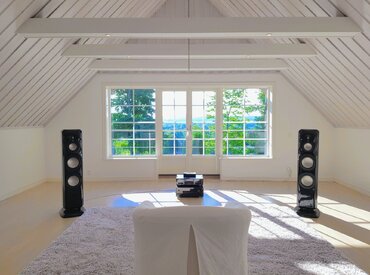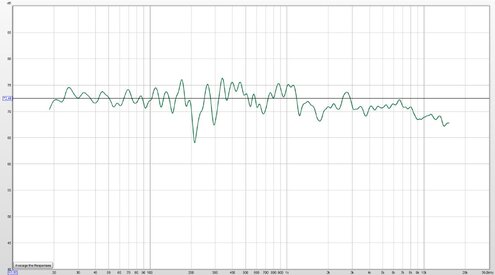Matt76
Registered
Thread Starter
- Joined
- Aug 3, 2019
- Posts
- 12
More
- Main Amp
- NAD M3
- Universal / Blu-ray / CD Player
- Denon DVD-2900
- Streaming Subscriptions
- Bluesound Node2
- Front Speakers
- Revel Studio2
Hi!
I just started using REW with the goal to flatten the in-room bass response of my Revel Studio2 loudspeakers. I'm using a MiniDSP 2x4 and a calibrated UMIK-1. Test signal is sent to the CD-input of my amp from the headphone jack on my laptop. Is that ok?
I've been able to get the bass response better than ±2dB, 19-125Hz, with 1/12 smoothing, but I had to use some pretty strong boost filters. How strong/sharp filters can I use without causing excessive distortion? Here's the result so far with DSP (with the speakers moved half-way toward the main wall compared to what you see in this photo).
Thanks,
Matt
P.S. I have not applied any filters above 125Hz as I'm worried I might be measuring and equalizing the wrong thing. I figured at <125Hz the sound in-room is alot more "omnidirectional" in it's nature?
I just started using REW with the goal to flatten the in-room bass response of my Revel Studio2 loudspeakers. I'm using a MiniDSP 2x4 and a calibrated UMIK-1. Test signal is sent to the CD-input of my amp from the headphone jack on my laptop. Is that ok?
I've been able to get the bass response better than ±2dB, 19-125Hz, with 1/12 smoothing, but I had to use some pretty strong boost filters. How strong/sharp filters can I use without causing excessive distortion? Here's the result so far with DSP (with the speakers moved half-way toward the main wall compared to what you see in this photo).
Thanks,
Matt
P.S. I have not applied any filters above 125Hz as I'm worried I might be measuring and equalizing the wrong thing. I figured at <125Hz the sound in-room is alot more "omnidirectional" in it's nature?
Attachments
Last edited:

















